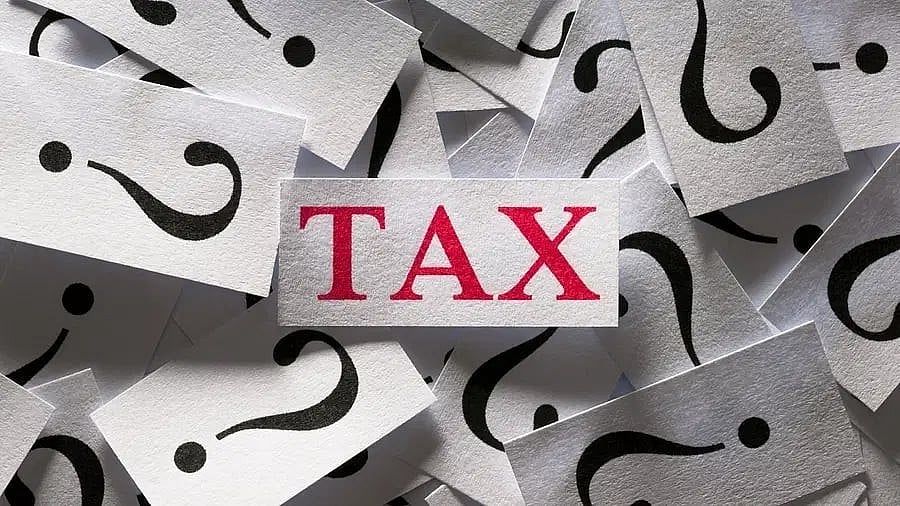
Representative image with the word 'tax'.
Credit: iStock Photo
After nearly a decade of reforms in indirect taxes, the Indian government is now turning its attention to a major overhaul of the Income Tax Act, which has been in place since 1961. In her budget speech, Finance Minister Nirmala Sitharaman announced that she would present the new tax bill next week. This ambitious reform aims to simplify the tax system, enhance transparency, and make compliance easier for both individuals and businesses. With a focus on reducing litigation and enhancing clarity, the new framework seeks to build trust and confidence among taxpayers. By offering significant relief to the middle class in the budget, the government aims to ensure a smooth and accessible transition to the new tax system. The first draft of the Direct Tax Bill is expected to be tabled later this week, marking the beginning of a new era in India’s tax landscape.
The Income Tax Act has undergone more than 3,000 amendments over the years and currently comprises 298 sections, many of which include exemptions and deductions. While judicial rulings over time have provided a strong foundation for interpretation, the Act has become increasingly complex due to frequent changes and interconnections between various provisions. Furthermore, several sections remain outdated and do not reflect current economic realities. For instance, certain perquisites for salaried employees, originally meant to be taxed only for high earners, now apply to almost all employees earning over Rs 50,000 per month. The exemption for education allowance remains capped at a mere Rs 100 per month, making the provision obsolete.
A key reason for redrafting the Act is the high volume of disputes over tax demands. A recent CAG report revealed that nearly 70% of demands are under dispute, highlighting issues related to the law’s language—particularly its clarity, precision, and accessibility. The government must make conscious efforts to draft a law that is both comprehensive and flawless. In this regard, the finance minister’s directive to the drafting committee to ensure “clearer and simpler” language is highly relevant.
The recent Budget has proposed new slabs while keeping the old regime intact. The old regime, which had provisions for deductions for investments, now appears almost redundant. Under the proposed new slabs, taxpayers will pay significantly lower taxes without needing to claim any exemptions and deductions. It is evident that the government is moving towards a simpler tax regime with less emphasis on deductions and exemptions.
According to the finance minister, the government anticipates a revenue loss of approximately Rs 1 lakh crore due to the new tax rates. However, the rise in indirect tax collections, driven by increased consumption
and higher disposable income in the hands of the public, is expected to offset this revenue loss. Moreover, at a time of slowing economic growth, the government’s priority remains reviving the economy and putting the nation back on track.
Direct tax collections represented 6.64% of the gross domestic product in the 2023-24 financial year, reflecting a consistent year-on-year increase. This growth is directly linked to improved ease of compliance and streamlined procedures. Notably, advance tax and tax deducted at source (TDS) account for approximately 82% of total direct tax receipts. To further enhance efficiency, simplifying the
TDS and advance tax payment processes is crucial. Tax return forms should be designed for simplicity, requiring only essential disclosures and minimal procedures. Moreover, facilitating the filing of returns via mobile apps, with robust data protection measures, will make compliance even more accessible.
The government must focus on simplifying the tax law and, at the same time, work on revenue neutrality since a major chunk emanates from direct taxes. Further, the government must strengthen the enforcement mechanism, leveraging technologies such as data analytics and artificial intelligence to prevent revenue leakage and tax evasion.
The concern is that a new tax code could merely be a “reshaped version of the old framework” if it only restructures existing provisions without substantive reforms. Renaming sections or restructuring chapters without resolving underlying issues of complexity and ambiguity would create a law that looks different but operates unchanged. The law should consolidate overlapping rules, eliminate outdated exemptions, and streamline deductions to reflect the current economic realities. Effective tax reform demands simplification, enhanced clarity, and thorough preparation across multiple fronts to ensure seamless implementation. A sudden shift from any established practice requires careful preparation and planning to ensure a smooth transition. Despite its inherent challenges, drafting a new Direct Tax Code (DTC) provides India with a crucial opportunity to overhaul its tax framework, making it more efficient and aligned with current economic realities.
(The writer is an assistant professor at the Department of Commerce, Christ deemed to be university)